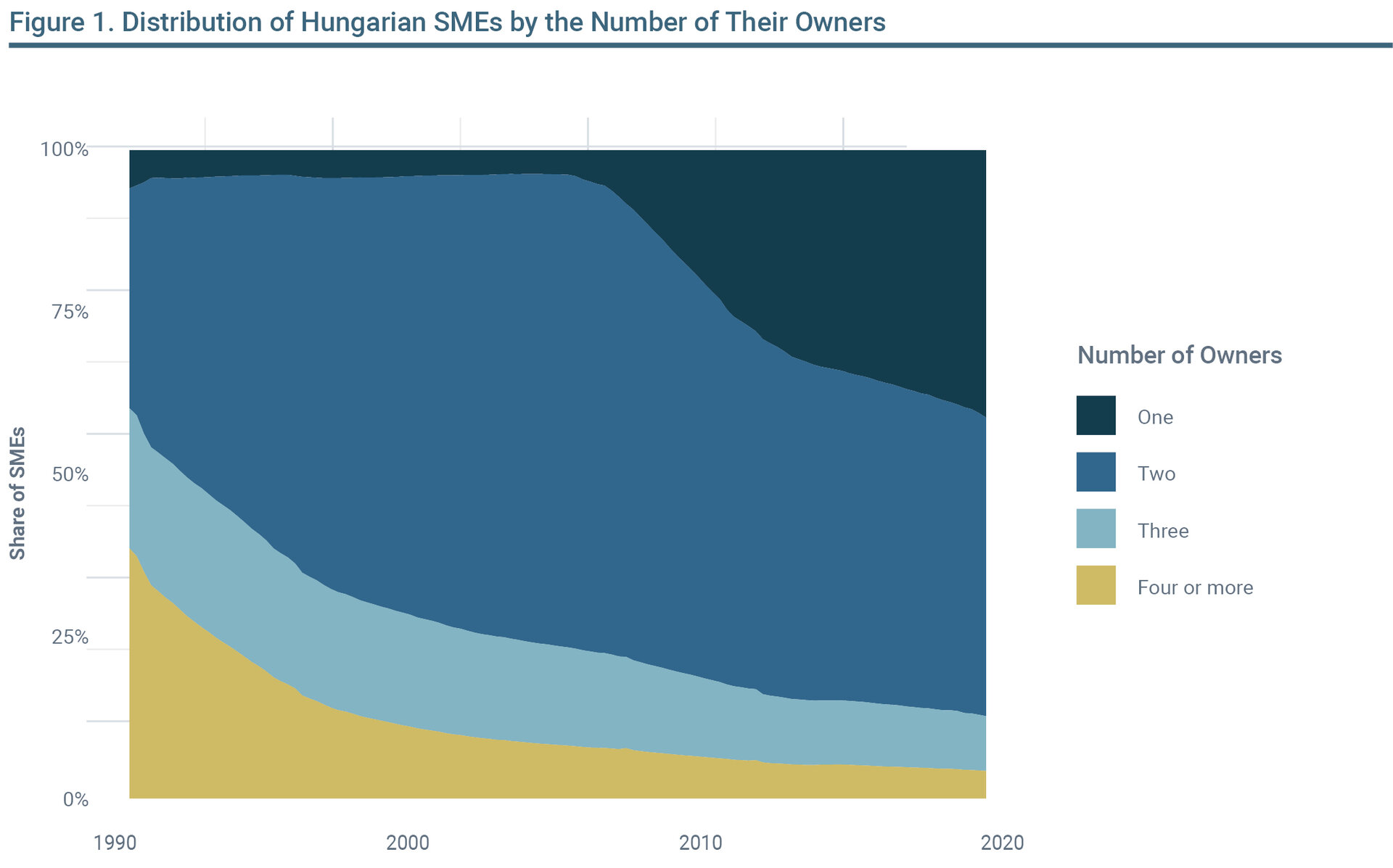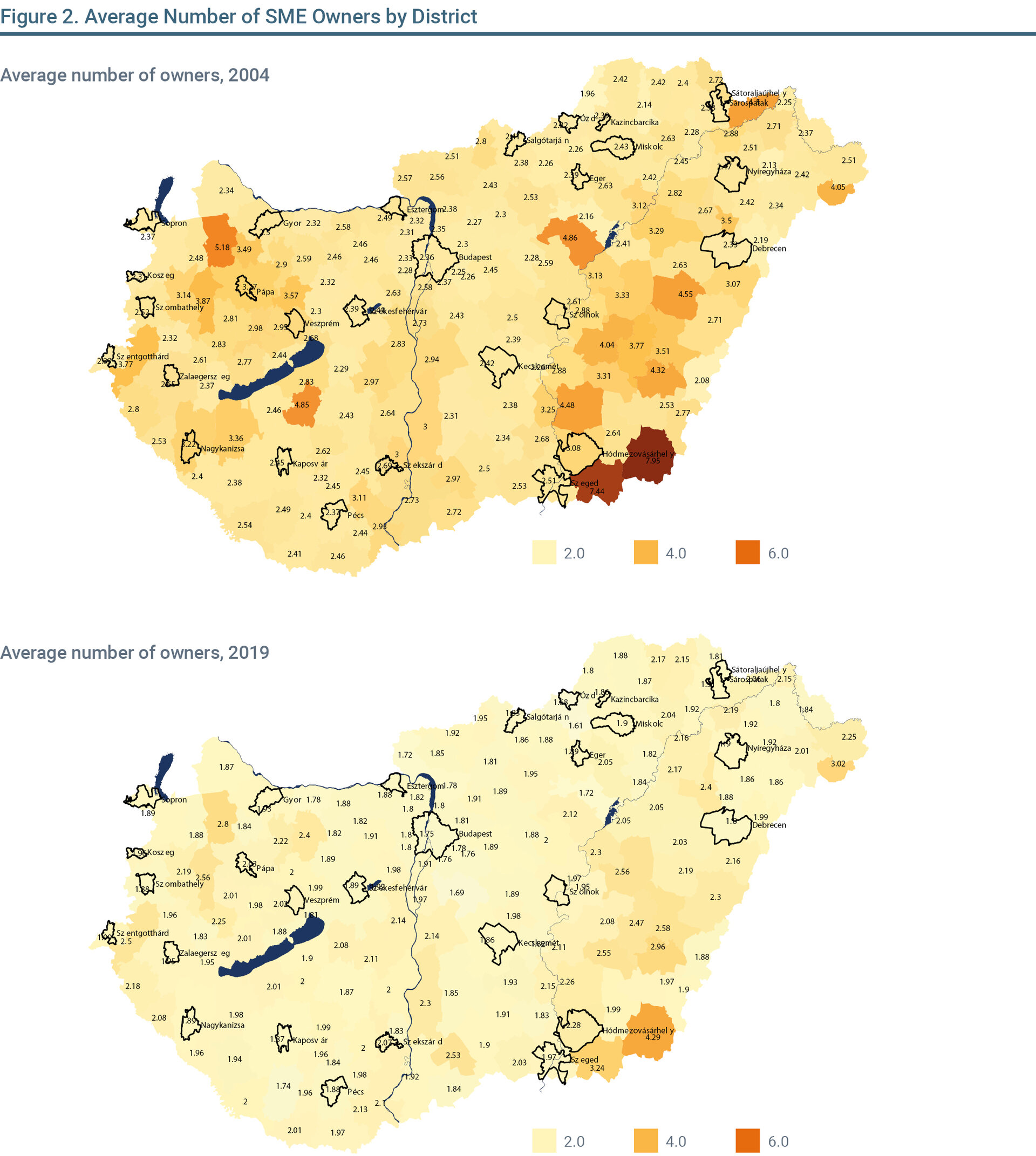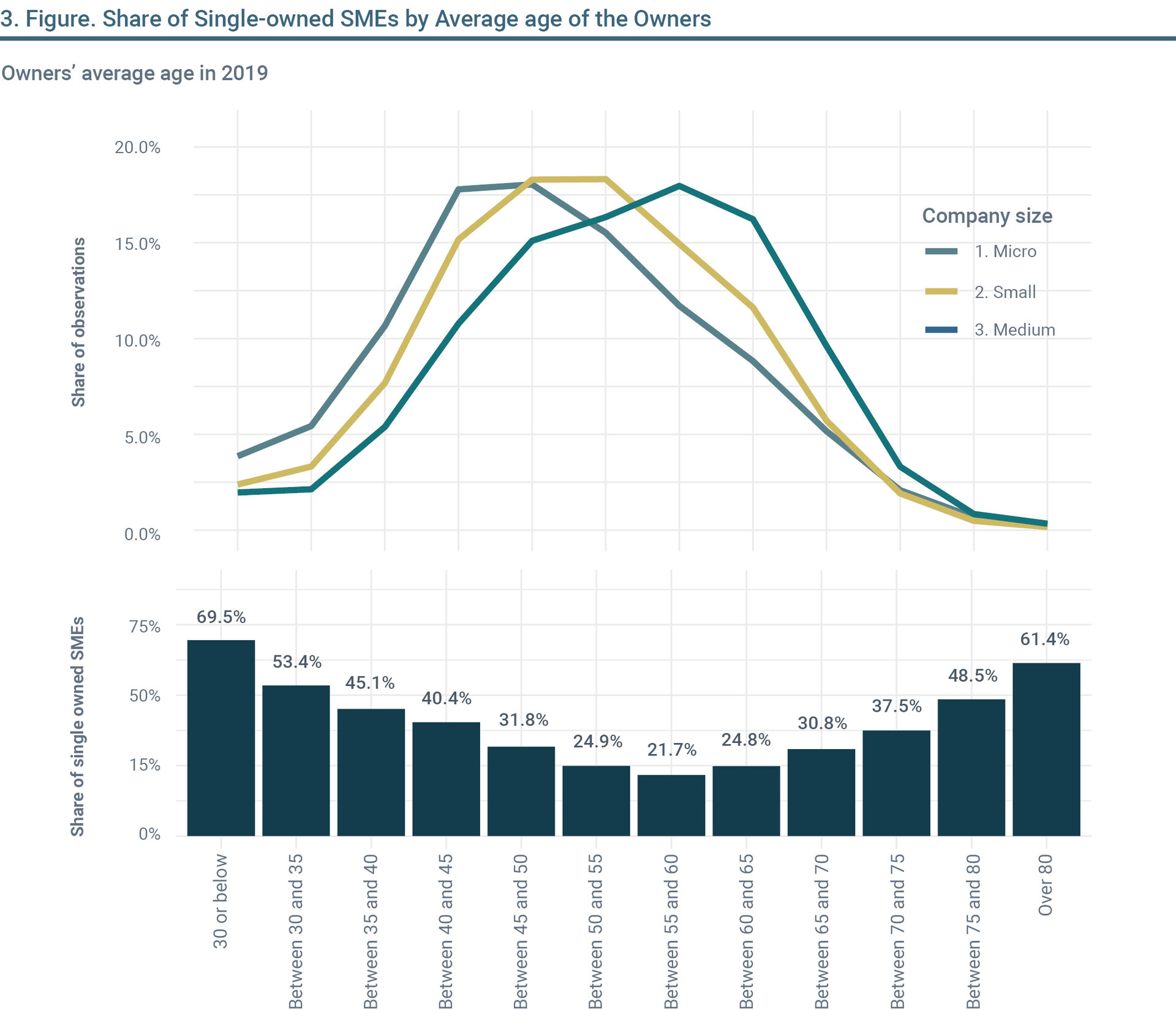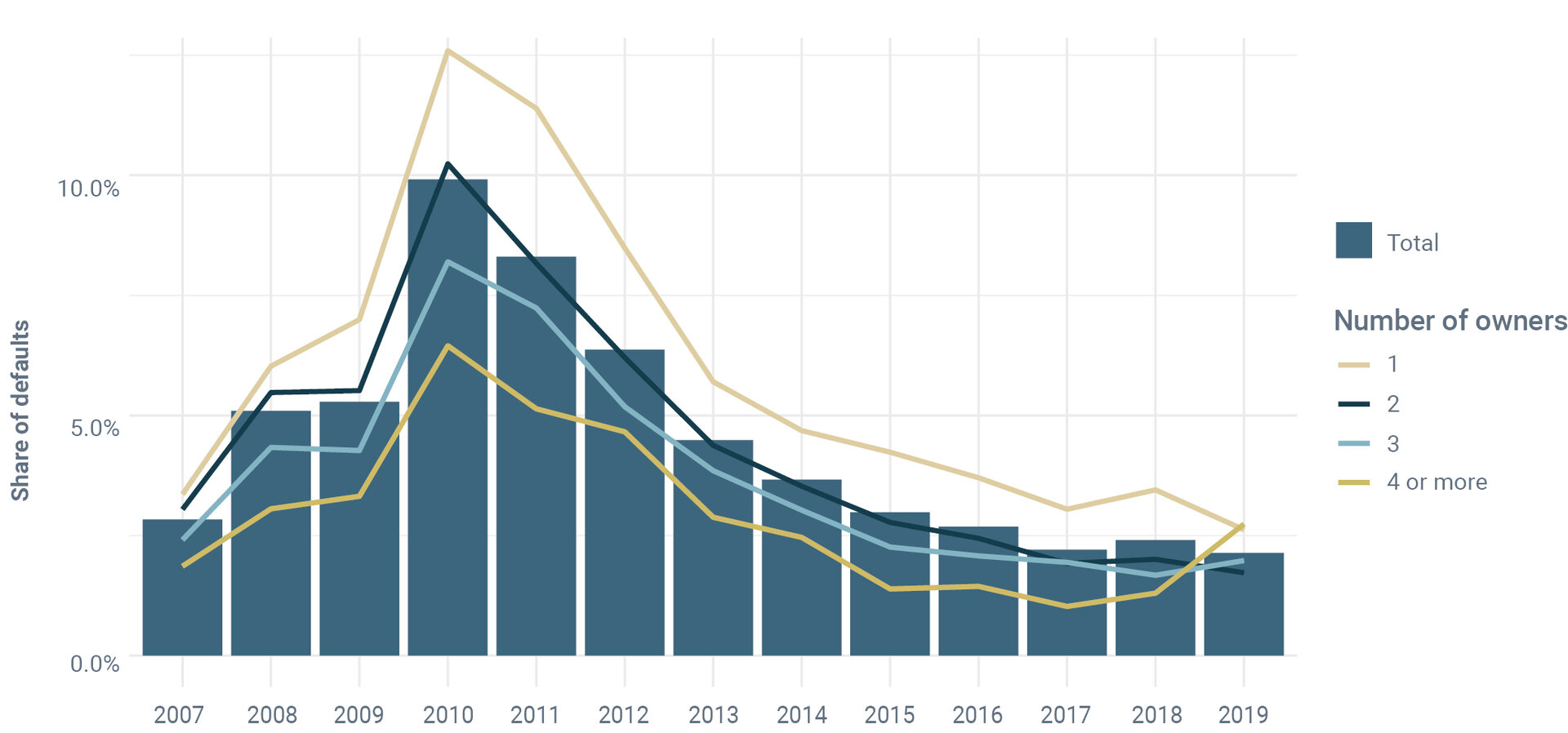Research Shows Enterprising Alone Brings Higher Risks
Small and medium enterprises (SMEs) with a single owner are twice as likely to credit default than SMEs with more than one owner, according to a research paper published in 2022 by the Hungarian National Bank (MNB). Dr. Csaba Burger, Data Science Advisor at MNB and author of the paper, shares highlights of the paper with Creating Value. Explaining the shift over recent years from multiple to single-owner SMEs, he outlines the increased risks involved, and provides guidance to SMEs on how to mitigate these risks and reduce the probability of falling behind on credit loans.


CSABA BURGER
Data Science Advisor
Hungarian National Bank (MNB)
According to the new research paper, the number of owners at an average Hungarian SME fell from four in 1991, following the fall of communism, to two in 2019, just before the COVID-crisis. Since this transition cannot be explained by industry, size, or taxation structural changes, it appears we are facing a fundamental societal transition. Starting a business has become easier: often partners are not required, and the availability of credit makes buying out co-investors simpler. However, owning and managing a business alone means that the SME takes on more risks without the expectation of higher returns and will fail to make debt payments on time more often than SMEs with multiple owners. The new findings may help transform management decision making and avoid the additional risks a single-owner company may bring.
Average Number of Owners at Hungarian SMEs on Downward Trend
Despite the dominance of state ownership in Central Europe before 1990, Poland and Hungary in Hungary was 25 percent only. Following the fall of the Iron Curtain it swelled to 80 percent by 2000. While the main driver behind the growth was the influx of foreign direct investment, domestic investors lacked access to funds, creating a situation where entrepreneurs needed to unite and start a “joint-stock” company.
The funding winter was gradually thawing after the turn of the century. In 1999, SMEs, representing 99 percent of all corporations, held one-third of all corporate bank loans. This figure gradually grew to 54 percent in 2006, a sign of the increasing availability of loans. At the same time, enterprising became easier, as data published on the “Ease of Doing Business” and “Costs of Business Start-Up Procedures” by the World Bank can attest. Finally, after the financial crisis of 2008, public policy change brought targeted, new SME-specific measures, including MNB’s NHP loan program and government- and EU-subsidized funding programs. Together, these processes made starting a business alone simple and buying out co-investors possible.
As figure 1 illustrates, during the nineties, the average number of owners at Hungarian SMEs dropped from four to two. From 2010 onwards, a shift to single-owned companies reduced the average further. And because the research excludes companies with simplified taxation formats, as well as sole entrepreneurs, it is not the gig-economy that has been driving this change.
Agricultural farming enterprises illustrates the relationship between owner numbers and the availability of funding well. In the 1980s, all land belonged to large (state) agricultural cooperatives. In 1994, legislation introduced private ownership but limited the amount of land that could belong to a person. Corporate land ownership remained prohibited and lending out fields was capped both in terms of area and contract duration (20 years tenancy). Foreign ownership was not permitted until 2011, when the seven-years EU-derogation expired, and several limitations were eliminated. Before that, farmers had limited opportunity to grow their enterprises, as returns were capped by a maximized land size, and companies were (and still are) unable to legally acquire fields. Any new investments, however, required capital, and land could serve as collateral only in a limited number of cases. Hence, the need to combine funds and start SMEs with colleagues was strong. However, the relaxation of certain limitations after 2011 and the better availability of credit to buy out peers contributed to a drop in owner numbers.

The map in figure 2 showing the average number of owners in Hungary is convincing evidence of this change: from 2004 to 2019, the color of regions with predominantly agricultural enterprises faded, indicating a rapid reduction in average owner numbers.
These statistics demonstrate that several characteristics move together with the number of owners, such as annual revenues, number of employees or if any of the owners is another corporation.

The average age of the owners, see figure 3, also tells a particularly interesting story: young, as well as older entrepreneurs are more likely to own their company alone.
The young are more likely to have micro-enterprises, while the older owners possess larger companies. On average, owners have partners most often between the ages of 50-65.

Finally, the analysis also demonstrates that the decrease in the average number of owners is not a result of a change in the composition of active firms. In other words, it is clearly visible that the average number of owners has been decreasing in the last thirty years, and we are seeing a fundamental transformation of business life.
SMEs With a Single Owner do Default More Often on Loans
Both microfinance institutions and researchers have demonstrated that borrower groups are less risky than individual borrowers and are generally preferred by lenders. Moreover, female creditors are associated with lower credit risk, fewer write-offs, and fewer bank provisions. As a result, at Grameen Bank, one of the most famous representatives of microfinance, 97 percent of all borrowers are women, or groups led by women.
SME owner(s) are more often personally involved in managing their companies, which entails risk planning and execution. However, planning and execution often offset each other, meaning that a careful planner may in fact have a riskier approach to running the business. Furthermore, risk aversion typically increases as years go by, and there may be a threshold age above which execution capabilities decline, meaning credit risk could rise once more. Given the ageing population of owners at SMEs founded in the 1990s, a company owner’s age is a particularly important factor in determining the potential risk for loan default.
The data in figure 4, showing the share of companies which were late with their instalments for 90 days or longer after the due date, strongly supports the previous assertions regarding Hungarian SME’s.
The graph, besides showing the prolonged effect of the financial crisis of 2008, demonstrates that single-owner SMEs had the highest share of defaults across all years, whereas SMEs with multiple owners have a lower probability of credit default. This also holds true if we look at industry, company size, location, legal form (or business structure), and financial metrics.
To some extent, SMEs with less owners exhibit higher leverage and lower liquidity values, which are placeholders for financial risk, meaning the number of owners is indeed directly related to financial and thus credit risk. There is, however, a residual part of credit risk related to owner numbers which cannot be directly explained by financial metrics and is responsible for the additional risk of enterprising alone.

Key Measures to Mitigate the Risks
The increasing prevalence of SME companies with only a single owner is a result of societal transformation in the economy. While this change may bring with it so far unidentified benefits, there are clearly negative consequences: owning and managing a company alone entails additional risks, as the above research on credit risk has proven. However, the good news is these risks could be mitigated with the help of several targeted measures:
- Young owners in particular may benefit from educational corporate finance programs by industry chambers or other institutions.
- SME managers could benefit from having equity investors - or even lenders - at the table to provide support and guidance when taking important decisions.
- Growing enterprises should be encouraged to introduce good corporate governance practices.
Such companies implementing the above measures could not only improve the fortunes of all stakeholders but also contribute to the stability of the financial system.